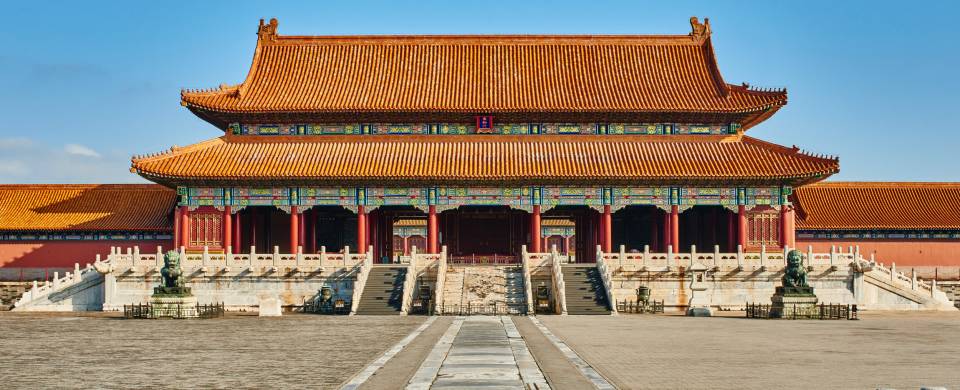
Trips and Tours to Beijing
About Beijing
Dive into the epic history of China's capital from the grand palaces and quiet temples, to the imposing Tiananmen Square. Explore the charming hutong area and discover the culinary delights of the city. And tick off one of the New World Wonders from your bucket list with a visit to the Great Wall of China. All this is on offer and more with our range of China tours, most of which begin in Beijing.
Beijing Tours
Here are some popular itineraries that include a visit to Beijing. Alternatively, if you would like to include a visit to Beijing on a bespoke touring itinerary to China, take a look at our tailor-made holiday planning section.
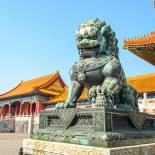
Shanghai, Beijing & Beyond
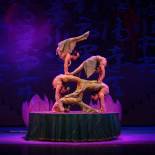
Shanghai & The Silk Road
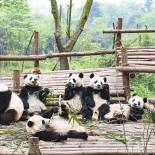
Shanghai to Chengdu Panda-monium
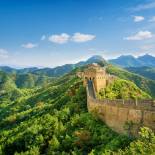
Shanghai to the Dragon's Backbone
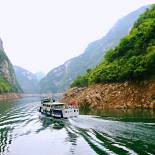
Shanghai & Yangtze Cruise
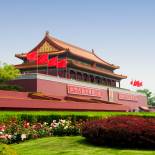
China Express
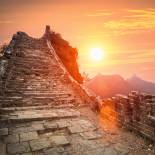
Beijing to Shanghai Express
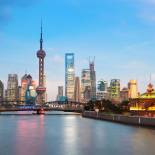
Great Wall & Warriors
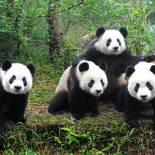
Great Wall & Giant Pandas
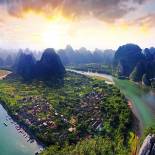
Fine China
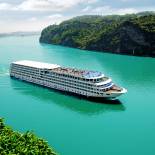
Yin and Yangtze
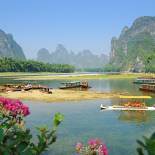
Essential China From Hong Kong
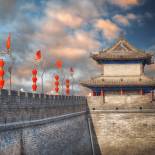
Hong Kong to Beijing
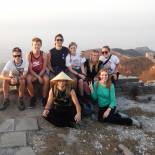
Essential China Adventure
Beijing Video
Best sites to visit in Beijing
Forbidden City
View on map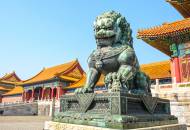
In the heart of Beijing stands the sprawling complex of ancient buildings known as the Forbidden City, named for the fact that people could only enter the grounds by invitation of the emperor. As the country's imperial palace for some 500 years, the Forbidden City was home to 24 emperors and their consorts from the Ming to the Qing dynasties (1420 - 1912). Spread across 180 acres, the palace consists of 980 excellently preserved and restored buildings with a reputed 9,000 chambers filled with a variety of exhibits from calligraphy paintings to ceramics, scientific instruments to courtly objects.
Tiananmen Square
View on map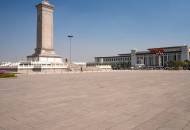
Measuring 440,000 square meters, this vast paved expanse is one of the world's largest public squares and is inextricably linked to the recent history of the People's Republic. Translating as 'Gate of Heavenly Peace', Tiananmen Square is home to the mausoleum of the man who founded modern day China - Chairman Mao - and above Tiananmen Gate hangs a portrait of Mao's proud face keeping a watchful eye over the square. Other notable sights around the square include the astonishing Forbidden City to the north, the engaging Museum of Chinese History to the east and the domineering Great Hall of the People to the west.
Temple of Heaven Park
View on map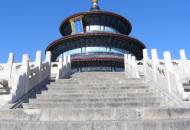
This remarkably symmetrical temple and its surrounding environs really are a slice of heaven in Beijing's busy city center. Founded in 1420 by a Ming dynasty emperor, the temple, which in terms of function is actually an altar, played a pivotal role in ceremonial events and is now largely considered to be the pinnacle of Ming design. Every design element speaks of the Chinese relationship with the origins of the universe - the square bases represent Earth while the round temples and altars represent Heaven with multiples of nine used as a symbol of completeness and eternity.
Summer Palace
View on map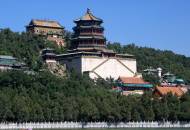
In the northwest corner of the city sits the Summer Palace park, a masterpiece of Chinese landscape design with green carpeted hills and expansive lakes. The site was used by royalty looking to escape the stifling summer heat and it's certainly a playground fit for a king with a resplendent palace complex of grand halls, temples, gardens, pavilions and bridges designed with harmony and beauty in mind. A highlight is the Hall of Benevolence and Longevity which contains a wooden throne and other pieces of furniture dating back to the 19th century.
Lama Temple
View on map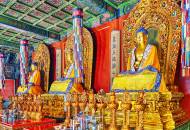
Located in the northwest of downtown Beijing, the colorful Lama Temple is the largest of its kind in China and the most renowned Tibetan Buddhist temple outside of Tibet. Perfectly combining Chinese and Tibetan architectural styles, the temple is notable for its rivet roofing, vividly painted woodwork and decorative interiors of frescoes, tapestries and Buddha statues and icons. The temple was originally built in 1694 as a royal residence but was not designated a lamasery until 50 years later, welcoming monks from across Tibet and Inner Mongolia. Today the temple serves as an active place of worship for monks and locals alike.
Olympic Park
View on map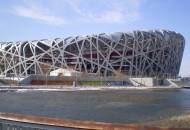
A striking legacy of the Summer Olympics, successfully hosted in Beijing back in 2008, is the specially constructed Olympic Park, located north of the city center in an area that covers almost 12 square kilometers. The world's top talent battled it out to stamp their designs on the event with architects from various countries responsible for the sporting venues that are now famed for their innovation. The centerpiece of the park is the Beijing National Stadium, nicknamed the 'Bird's Nest' for the shape and appearance of the outer steel frame. The Olympic Park can easily be reached by subway and is best visited in the evening when the buildings are magnificently illuminated.
798 Art District
View on map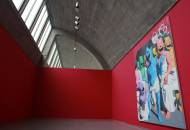
Named after a 1950s factory, the 798 Art District is the best place to go for a live insight into contemporary Chinese art. The industrial space was the perfect spot for artists to set up large, airy studios where they could tackle social and political themes in multi-media and with the artists came the galleries that now host international art exhibitions and local events. With a smattering of cafes and shops it's worth the trip out here with a couple of hours easily absorbed by the art on display and the sight of Beijing's creative set hard at work. On Mondays many of the galleries close for the day.
Recommended things to do in and around Beijing
Day trip to the Great Wall
View on map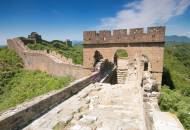
North of Beijing is China's most famous, most popular and most iconic sight - the Great Wall. Snaking a haphazard trail from the eastern coast fronting the Bay of Bohai to the arid desert of the Gobi in the west, the Wall is a series of sections that range from decrepit piles of stone to immaculately restored battlements with watchtowers and obstacle walls. It's little wonder that this astonishing feat of engineering was voted one of the world's New 7 Wonders and a visit to China really isn't complete without a visit. Allow a full day to explore the wall with transfer times from the capital taking around 2-3 hours depending on traffic.
Acrobatic Performance
View on map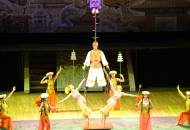
With a long and rich heritage, the acrobatic art has been existent in China for more than two thousand years. An evening of choreographed death-defying acrobatic feats in Beijing involves very lithe individuals clad in awesome technicolor costumes performing in tune to sound and light. Bicycles, rings of fire, tables and slippery cylinders are common props in routines such as the lion dance, wushu (traditional group gymnastics), tight-wire feats, spring boarding, gymnastics on double-fixed poles and hoop diving. The Chaoyang Theater is one of the best places to watch a performance while visiting Beijing.
Rickshaw ride through the Hutongs
View on map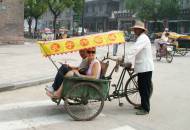
For a glimpse of ancient China in modern day Beijing, nothing beats a rickshaw ride through the charming hutongs, alleyways lined with resident buildings built around a courtyard (known as siheyuan in Chinese). Dating back to China's late dynastic period, a trip around the hutongs provide a fascinating insight into a now-dying way of life as much of Beijing's ancient quarters are demolished to make way for shiny new skyscrapers and sprawling highways. Rickshaw rides typically last half an hour and usually include a visit to a local residence where you can explore the interior.
Eating out in Beijing
Dadong
View on mapOf all the cuisines found in Beijing, one specialty is known above all else and that's Peking duck, a dish that has been prepared since the imperial era, and Dadong is one of the best places in the city to sample it. Located northeast of the city center in an area known as Sanlitun, Dadong serves the Peking duck of your dreams - crispy skins that have plenty of crunch and succulent meat with plenty of flavor - but that's not all as the weighty menu offers plenty more delicious Chinese fare. It's worth booking in advance as the restaurant is usually packed.
Meal prices: $$
Haidilao
View on mapThe popular Chinese dish of hotpot has a history dating back over 1,000 years with a variety of raw meat and vegetable ingredients cooked in a pan of simmering broth. A firm favorite among diners in Beijing is Haidilao, a reasonably priced chain of restaurants with excellent customer service and added extras such as free manicures while waiting for a table. The spicy Sichuan hotpot is especially recommended while the hand-pulled noodles (complementary display of pulling techniques included at your table) are another highlight on the menu.
Meal prices: $$
Capital M
View on mapFor fine dining with impressive views, the stylish Capital M is a solid choice. Overlooking Tiananmen Square on a sweeping terrace diners can enjoy an irresistible selection of European dishes from smoked salmon to leg of lamb, suckling pig to crispy duck in the heart of the city. The contemporary interior of the venue features a river-themed mural with open fireplaces and a geometric fashioned floor. It's also a prime spot to enjoy a cocktail with imaginative twists on the classics, or a glass of wine with a well-rounded choice.
Meal prices: $$$$
Crescent Moon Restaurant
View on mapThanks to the large Muslim population in western China, Middle East-inspired cuisine is popular across the country and in Beijing you'll find a Muslim restaurant on practically every street corner. Few restaurants do it better than the Crescent Moon, run by Uighurs with staff dressed in traditional embroidered outfits and a decor displaying a local ethnic flavor in a charming residential area. Mutton is cooked every which way, spiced with Uighur seasonings and served with naan bread and homemade yogurt, though the highlight on the menu (provided in English) is the barbecue leg of lamb.
Meal prices: $
Shopping in Beijing
Wangfujing Street
View on mapClose to the Forbidden City is one of Beijing's four main shopping districts, the pedestrianized street of Wangfujing. Large shopping malls stand on either end of the street with stalls and stores in between selling all manner of goods. Famous names on Wangfujing include the Shengxifu hat store, the Children's Department Store, Tongshenghe shoe shop and Yong'an Tang herb store. It's also a great place to sample Beijing's range of food delicacies and oddities with a whole street running off Wangfujing filled with food stalls and markets selling deep fried insects and candid fruit, to name just a few.
Silk Street Market
View on mapUp until 2005 the Silk Street Market was a chaotic collection of outdoor stalls spread across Chaoyang District that are now housed together under one roof in a shiny new six-floor complex. The same goods are still on sale from shoes to suitcases, clothing to jewelery, and watches to arts & crafts. Open from 9am to 9pm throughout the week, thousands of eager shoppers visit each day looking for a bargain or a knockoff designer handbag or branded pair of trainers. Basic English is pretty widely spoken by the stall owners here and bargaining is expected - scout around as many stalls sell the same stock.
Panjiayuan Market
View on mapThis is the place to go if you're looking for antiques, arts and crafts. Located in the southeast of the city, the Panjiayuan is Beijing's largest antique market with a staggering range of secondhand goods from furniture to ceramics. Under the arts and crafts umbrella you'll find calligraphy, traditional Chinese painting, musical instruments and lacquer ware to name but a few. Even if you're not a serious shopper it's worth a visit with plenty of intriguing curios and photo opportunities. The market is open all week but some stalls may be closed on certain days. For the market at its most active, visit on the weekends.
Qianmen Street
View on mapFor those with cash burning a hole in their wallets, the boutique shops and international brand shops on Qianmen Street are waiting to help lighten the load. Just 10 minutes' from Tiananmen Square this attractive street features ancient-style buildings with modern shops selling predominately higher end clothing and shoes. It's a particularly pleasant area to wander in the evening with store lights glowing in the waning daylight and no cars or traffic to contend with on the pedestrianized street. Authentic Chinese snacks can be found on two little lanes off the main street, perfect when working up an appetite on a shopping trip.
Transport links in Beijing
Flying In
View on mapLocated 25km northeast of the city center, the modern Beijing Capital Airport (PEK) is something of a showpiece and the main international gateway to mainland China with over 60 airlines flying into the airport from destinations around the world. Three terminals serve both domestic and international flights with the newer T3 completed back in 2008. The fast and efficient Airport Express Train connects T2 and T3, and also links the airport with Dongzhimen subway station in downtown Beijing. The journey takes 20 minutes.
Railway Services
View on mapChina's extensive and efficient railway network connects Beijing with cities across the country as well as neighboring countries. One of the world's most legendary train journeys is the Trans-Siberian across Russia through Mongolia and onto Beijing (or vice versa) and many travelers will arrive into Beijing via the Beijing Zhan central train station. The station has left-luggage facilities and great intercity connections. This station also serves trains to popular domestic destinations that include Shanghai, Xi'an and Harbin. Train tickets should be booked in advance as availability can be an issue throughout the year.
By Road
View on mapThe road from the airport to the city center is a smooth and comfortable ride though Beijing's chaotic and congested traffic means the journey time can take anything from one hour to two. Private transfers (included on all our group tours in China) are a great way to get to your hotel in Beijing with an English-speaking driver waiting for you at the airport arrival's hall. For those arriving independently taxis are plentiful and the official taxis that queue outside the airport use meters with costs around $20 depending on traffic and the journey time.
Subway
View on mapBeijing's subway system of 18 lines and 334 stations is a fast and cheap way to get around the city. As one of the longest underground transport networks in the world it's possible to get from one side of the city to the other with little hassle. Extensively developed during the build up to the 2008 Olympics, the stations now have many signs and even announcements in English making it easy to get around independently. Most trains on the network operate between 5am and 11pm, and as with most cities, becomes especially busy during the morning and afternoon rush hour commutes.
Best Time to Visit
By far the best time to visit Beijing is in the autumn months of September and October when the skies are clear and dry, and with temperatures pleasantly warm. The scenery turns a brilliant range of autumnal hues from golds to reds, yellows to oranges, which makes it a particularly attractive time of year to visit the Great Wall. At other times of the year it is bitterly cold in the winter (December - February), unbearably hot and muggy in summer (June to August) and windy in spring (April and May) though this does mean Beijing's notorious smog and air pollution is a little lighter.